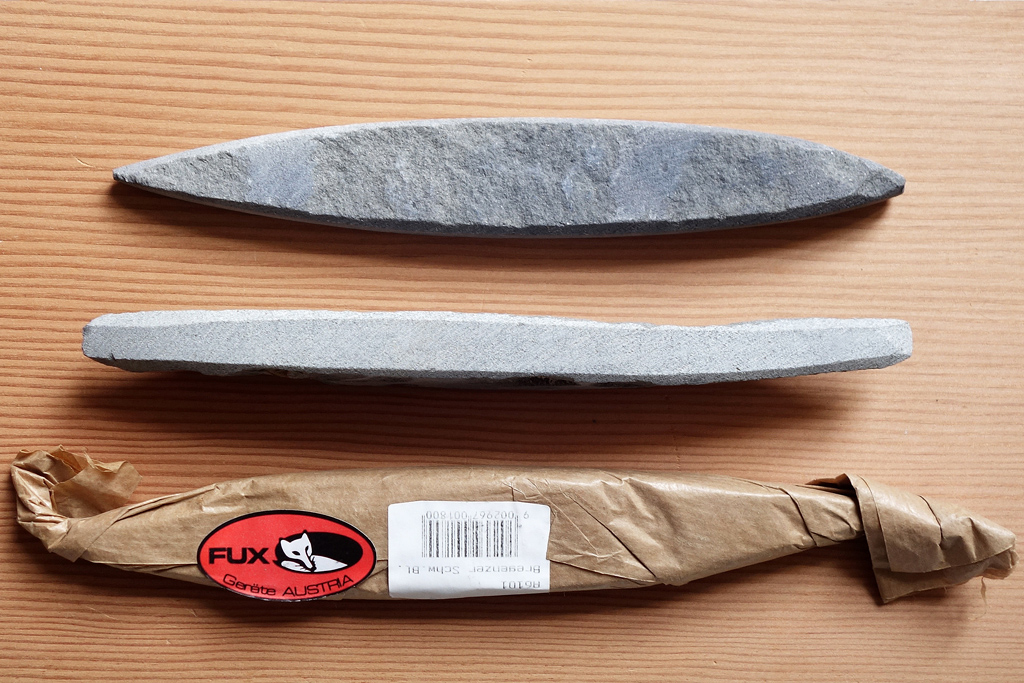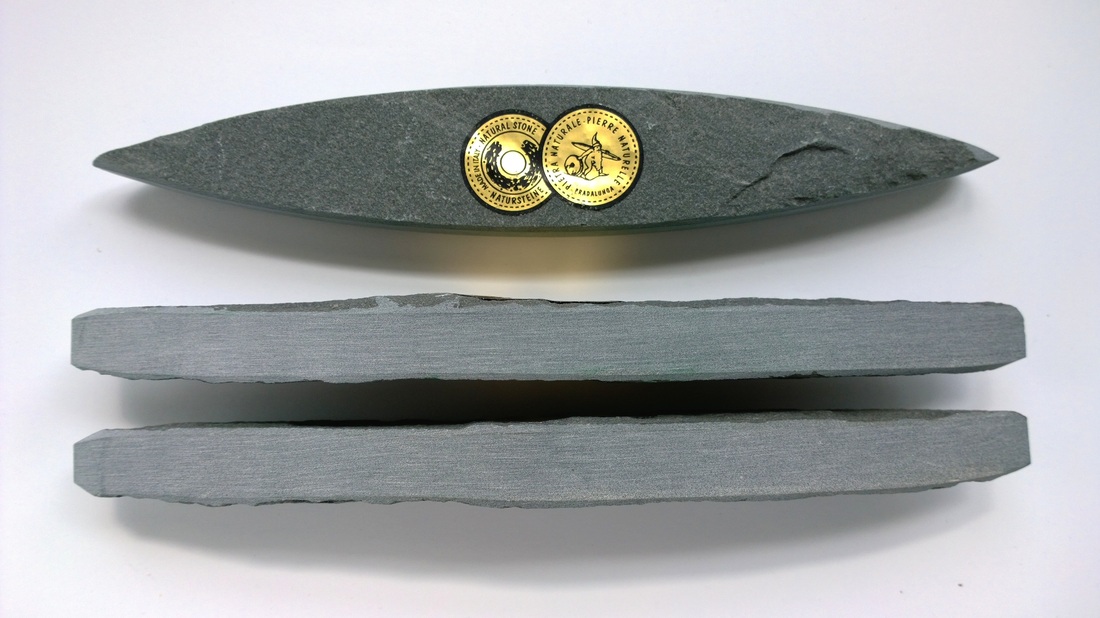That's a little tricky to sus out for a number of reasons, most notably the fact that natural stone of course does not have a consistent abrasive grain size whatsoever. Then, even if they were all the same grain size, the cut rate is so different between quartz and aluminum oxide or silicon carbide that you can't simply estimate the grit rating vs. synthetics. Further, I specialize in American scythes so while I own several of those stones for personal collection purposes, their primary use is on European scythes that are typically around only 45 RC which skews perspectives of their cutting dynamics, and I mostly use American scythes that are between 50-58, with most being over 55. So the description I might give vs. someone routinely using them will be radically different. Lastly, Ligato Fratelli, the maker of all but the Bregenzer in that list, went out of business due to the owner passing away and his sons not wanting to continue the business, at least to the best of my current knowledge. It caused something of a minor crisis in the international scything community.
 FortyTwoBlades
FortyTwoBlades








